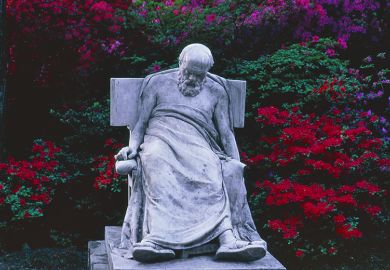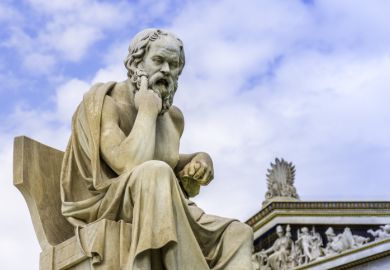John Searle is famous for upsetting people, and reading The Mystery of Consciousness you can see why. The book is based on articles previously published in The New York Review of Books, each chapter being a critique of a well-known author in the field of consciousness studies.
Francis Crick, Gerald Edelman and Roger Penrose all have their recent bestsellers laid bare with a few masterly strokes. Edelman emerges top of the class - his books on the neurobiology of consciousness (The Remembered Present and Bright Air, Brilliant Fire) are "brilliant", his insights "dazzling" - but even he fails to uncover the cause of consciousness: "the mystery remains".
Crick's Astonishing Hypothesis is commended for its science, but Searle the professional philosopher is quick to detect an amateur in his own field and warns us to "ignore the philosophical parts and just learn about the psychology of vision and about brain science".
The last of the triumvirate is damned with even fainter praise: "Admiring Penrose and his work, I conclude that the chief value of Shadows of the Mind is that from it you can learn a lot about Godel's theorem and about quantum mechanics. You will not learn much about consciousness."
That is Searle discussing his friends, those researchers with whom he is broadly in sympathy. So it is not hard to imagine what lies in store for his declared opponents: arch-rival of decades, Daniel Dennett, and "new kid on the block", David Chalmers. In these cases the NYRB articles provoked immediate responses from the aggrieved authors. This book prints these replies alongside the relevant articles, together with further rejoinders from Searle.
Centre stage in the controversy stand qualia, those subjective qualities such as sound and colour, pain and anticipation, that make up our conscious experience. And lurking behind the arras is dualism, the view that humans are made up of two distinct elements: a physical body and a non-physical mind, the latter being the seat of personal identity and of consciousness. This doctrine was held as far back as the ancient Greeks and is probably still the unthinking belief of most of us. But it is profoundly unfashionable among philosophers. So our three protagonists face the question: if qualia cannot be attributed to "mind stuff", where are they to be located?
Dennett, antagonising more people even than Searle, has declared that you cannot locate qualia anywhere because they do not exist. Hence Searle's title "Consciousness Denied" for his chapter criticising Dennett's best-known book, Consciousness Explained. For Dennett, the only things that really exist are those which can be described by objective scientific third-person methods, in other words, things that make up the physical world. Since he accepts the Cartesian view that mental states are not part of that physical world, he is forced to conclude that they do not exist at all. According to him, our subjective first-person experiences only seem to exist; they are illusions born of mistaken judgements about the physical functions of our brain and nervous system. Searle, like most people, thinks this is daft.
Chalmers, in The Conscious Mind, agrees with Dennett that conscious experience is not part of the physical world, but he is unwilling to deny its existence. It is, he claims, a non-physical feature of the world, an additional fundamental property of the universe, alongside mass and charge and space-time. This is a desperate remedy. First, no philosopher likes defying Occam's razor by multiplying entities. And secondly, what Chalmers offers is a variety of dualism, and so requires "bridging principles" to link experience to the physical processes of the brain and nervous system with which it is associated, but by definition is not a part. Searle pillories the whole edifice as combining the worst of both worlds, functionalism and dualism.
But when he states his own position, Searle fares no better than his rivals. He says the physical brain causes conscious experience and consciousness is in turn "realised" in the brain. The two are inseparable, like the property of liquidity and the water which both produces it and is the medium in which it is realised. But, he insists, consciousness can neither be reduced to its physical substrate (as Dennett claims), nor be treated as an additional non-physical feature of the world (as Chalmers suggests). This puts him in a cleft stick.
To avoid Chalmers's dualism, Searle relies on consciousness having "a first-person ontology", ie it "only exists when it is experienced". But against Dennett's reductionism he has to maintain that consciousness is one of "those real features of the world that exist independently of observers". He is trying to have his cake and eat it, and he cannot have it both ways.
The Revd Anthony Freeman is managing editor, Journal of Consciousness Studies.
The Mystery of Consciousness
Author - John R. Searle
ISBN - 1 86207 074 1
Publisher - Searle
Price - £9.99
Pages - 224
Register to continue
Why register?
- Registration is free and only takes a moment
- Once registered, you can read 3 articles a month
- Sign up for our newsletter
Subscribe
Or subscribe for unlimited access to:
- Unlimited access to news, views, insights & reviews
- Digital editions
- Digital access to THE’s university and college rankings analysis
Already registered or a current subscriber?



